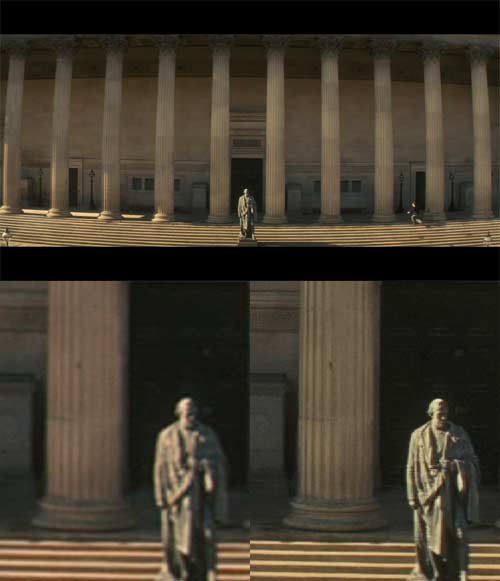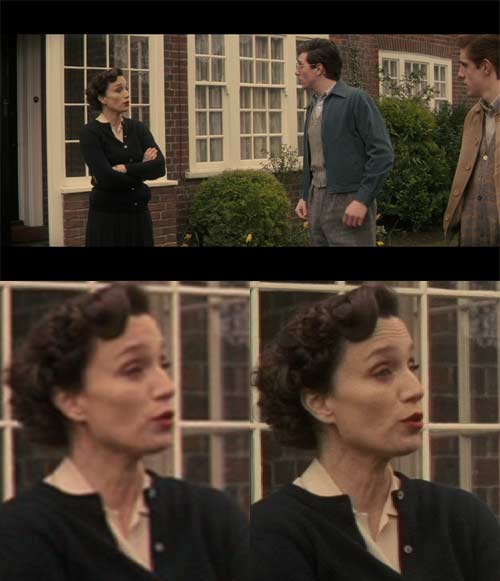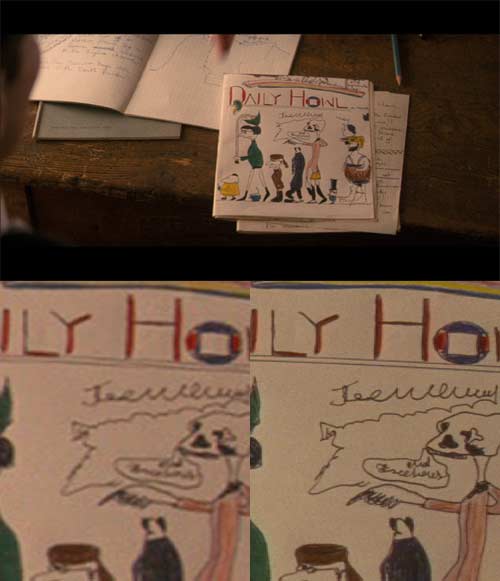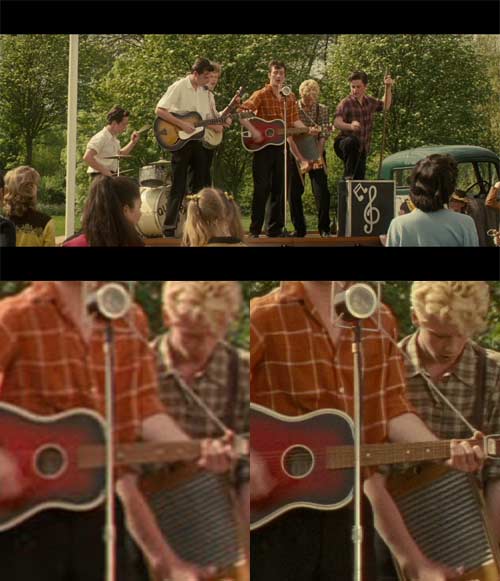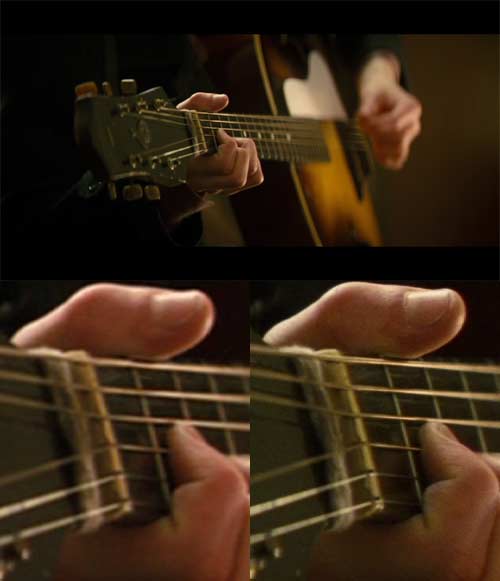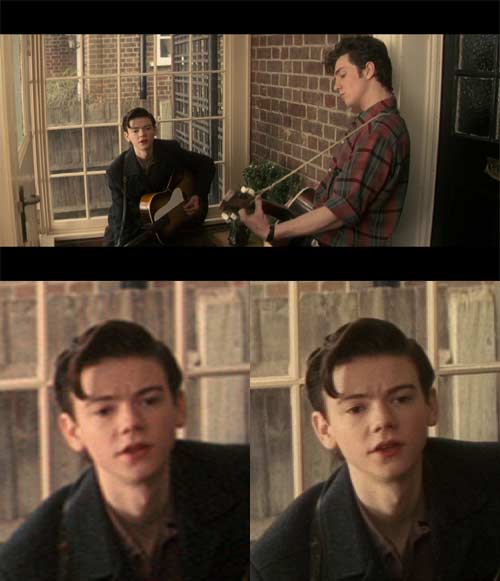 Picture:
Picture:  Sound:
Sound:  Extras:
Extras: 
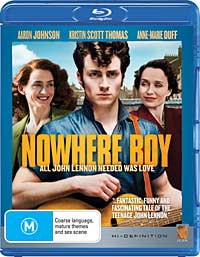
Movie:  Picture:
Picture:  Sound:
Sound:  Extras:
Extras: 
The emphasis of the movie is on the drama surrounding Lennon's alleged teenage reunion with his birth mother, after an unwanted separation for about ten years, leading eventually to The Quarrymen and The Beatles. I say alleged, because while this decade-long estrangement is pivotal to the movie, the Wikipedia biographical entry, based on a memoir by Lennon's first wife Cynthia, suggests that in fact his mother remained in contact throughout.
In any case, both agree that the youngster was brought up by his Auntie, and that he was taught banjo by his mother.
As is often the case, events that appear to proceed over a period of months in the movie were spread over nearly four years in real life.
There isn't a huge amount of music in the movie, considering the subject matter. But what there is is nicely done. The Quarrymen were primarily a 'skiffle' band, which involved mixing real and improvised musical instruments. One of the oddities of postwar Britain was, like the Blues which were to follow, skiffle was adopted from the US African American musical tradition. It wasn't until the eve of their departure for Hamburg that the group -- by then The Beatles -- had a regular drummer, so it's amusing to see the group of youngsters wielding a washboard as one of their rhythm instruments.
Most of the music that is present is from the late 50s; the kind of thing that influenced the lads, or that they covered then and later. Only three of the music elements were compositions by (later) Beatles members. These, and all the dialogue of course, are presented in lossless 24 bit 5.1 channel DTS-HD Master Audio. The quality of the codec is such that it is entirely transparent to whatever was recorded, and what was recorded was generally of pretty good quality. The producers steered clear of too studio a sound, so that the back-of-the-truck debut of The Quarrymen sounded nicely open and airy.
The filming avoided the common affectations of 'period' pieces -- specially tinted colour and so on -- except for the short flashbacks needed to explain how Lennon ended up where he was. Instead it is shot naturalistically, with a nice palette that makes the late 50s a great deal more real than it is typically presented. The picture was artefact free, and delivered in 1080p24 at a quite high video bitrate to ensure accuracy.
 (Australian rating); Region Free
(Australian rating); Region Free
The following video bitrate graph was generated by BDInfo 0.5.3:
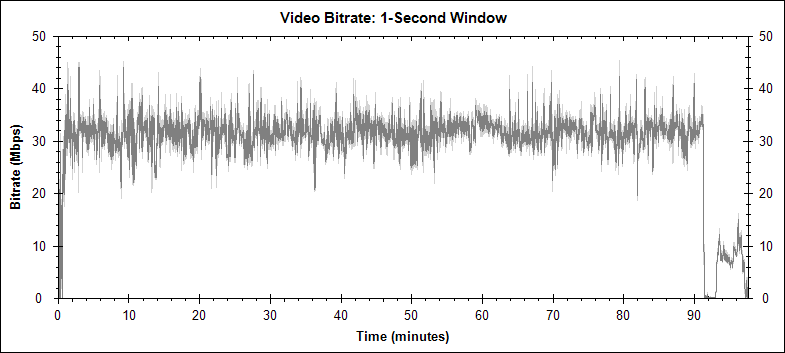
At the top of each is the full frame (suitably shrunk down) used in the comparison, with a 250 pixel wide detail from the frame underneath. The left side is from the PAL DVD. The image was captured digitally from the disc, scaled up from its native 720 by 576 pixel resolution to 1,024 by 576 (to present in the correct aspect ratio) by the application. I then scaled it, in order for it to be comparable to the Blu-ray version, to 1,920 by 1,080 pixels.
The detail is from that last scaled version, and has not been rescaled again. The right side is from the Australian Blu-ray. This has not been scaled at all. Different applications were used to capture the two frames, so some caution should be exercised in judging colour and brightness.
For visitors from NTSC lands, generally the PAL DVD is just a touch sharper than the NTSC DVD.
